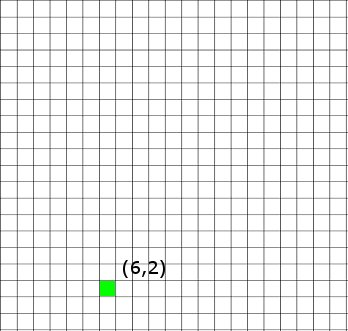Before we get started, I feel the need to point out that this entry will in no way even begin to approach the territory of being comprehensive in the study of video game physics. This is targeted toward those who have little background in physics and is very much a starter tutorial. In general, the better and more realistic the game physics, the closer you’re getting to actual physics – and that’s a lifetime study in itself. However, there are some basic tips and tricks to know when dealing with intro action and arcade style games.
Newton and his Mechanics
While games have gone from simple squares on the screen to 2D sprites to 3D-super-rendered-polygon-ray-traced-blammo-wow objects, the actual science behind their movement on the screen has stayed relatively the same – mainly because their movement is based on the movement we’re used to, what we see all around us every day. We reproduce it in our video games (for the most part) because it’s natural and makes sense to us. We’re mirroring physics! Specifically Classical (or Newtonian) Mechanics. We generally don’t need to take into account relativity or quantum mechanics when making Mario jump from one green pipe to another.
So to understand how the pod in Lunar Lander works, we need to understand how a real lunar lander would work. But let’s start out more simply.
Mass and Position
What is mass? This is a large, fundamental question that involves inertia, resistance to movement, the amount of force necessary to move the object, etc. But we don’t need to get that deep into it. Mass is physical stuff. You have mass, a ball has mass, the planet has mass, your dog has mass, Catholic churches have Mass, etc. (ba-dum-dum). Anything physical has mass. It doesn’t start moving for the most part, it stays where it is until something pushes it (in the case of a person, your muscles). If it’s already moving, it doesn’t stop moving unless something stops it (a wall, friction, a large rope, etc). It basically keeps doing whatever it’s already doing.
Reproducing an object that sits there and does nothing is very easy to do in a video game. Simply create a representation of an object, whether it be a colored square (Pong), a bitmap graphic (Mario), or a polygon object (Lara Croft) and put it on the screen. The actual way to do this is outside this tutorial (Check out Creating a Blackberry Game if you’d like to see how to do it in Java). Just as in the real world an object has a position, in the video game world, the object will have a position too – a coordinate on the screen. In the below example, we use a simple object that is 1 pixel in size for a pong-like game.

The green pixel is our pong ball
When programming this, we would need to store the dot’s X coordinate and Y coordinate into variables, in this case, store a 6 in X, and a 2 in Y. If we wanted to use the arrow keys to move this object, we would simply add or subtract from the coordinates as the appropriate key is pressed (e.g. pressing up -> Add 1 to Y, pressing down -> Subtract 1 from Y, pressing right -> Add 1 to X, pressing left -> Subtract 1 from X). Then redraw the object in its new location. Our drawing routine would always just take the values and of the X and Y variables and draw a pixel at those coordinates on the screen.
While this would be enjoyable for 2-3 seconds, it would overall be a fairly boring game. We would be doing physics’ job in this case, telling the object how to move every step of the way. We want physics to carry its load. So let’s program in another property.
Onto Part 2
 Hello - and thanks for visiting my site! I maintain ToniWestbrook.com to share information and projects with others with a passion for applying computer science in creative ways. Let's make the world a better and more beautiful place through computing! | More about Toni »
Hello - and thanks for visiting my site! I maintain ToniWestbrook.com to share information and projects with others with a passion for applying computer science in creative ways. Let's make the world a better and more beautiful place through computing! | More about Toni » 




Leave a Reply